Spectacular Images Reveal Mysterious Stone Structures in Saudi Arabia
Flying over Saudi Arabia
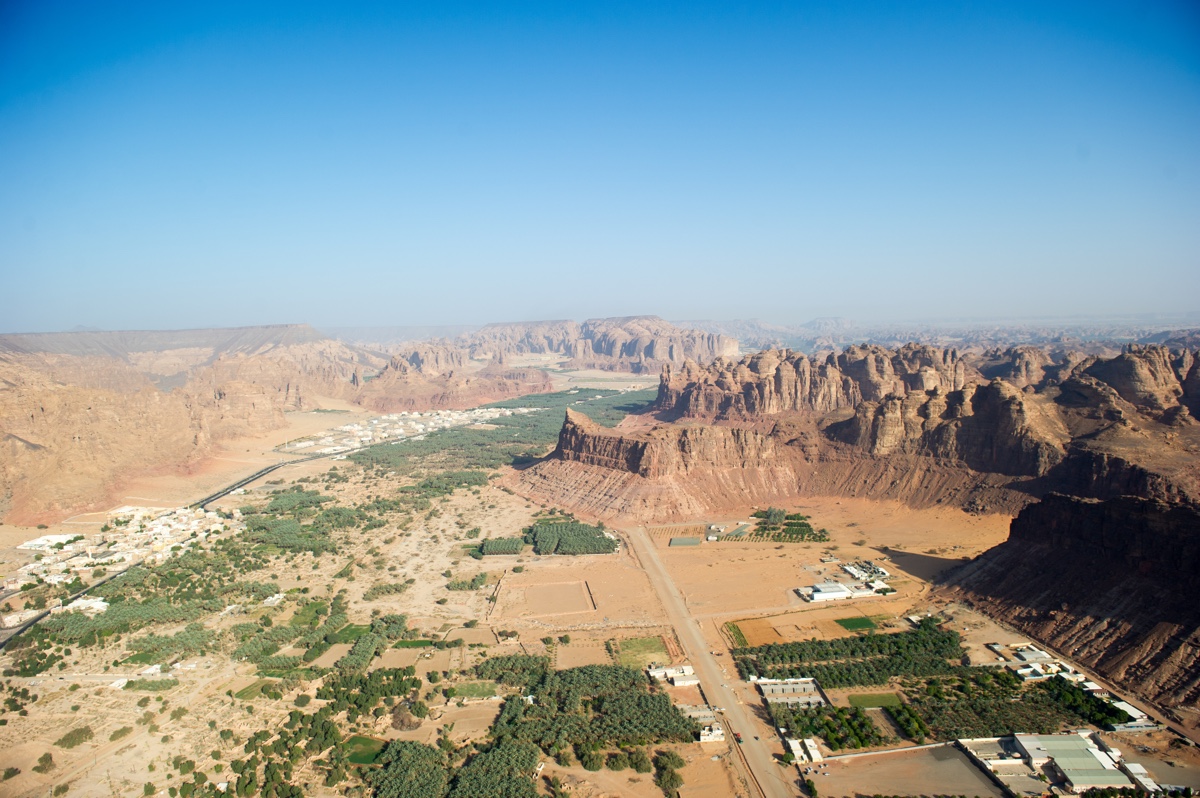
Between Oct. 27 and 29 of 2017, an archaeological team took nearly 6,000 aerial photographs of around 200 archaeological sites in the Al-Ula region of Saudi Arabia. This photo gallery shows a small sample of sites the team photographed. This photograph shows part of the Al-Ula Valley, a region known for its sculpted mountains and vast archaeological remains that date from prehistoric times to the modern day. The team took most of its photos in the adjacent volcanic areas. [Read more about aerial archaeology in Saudi Arabia]
Harrat
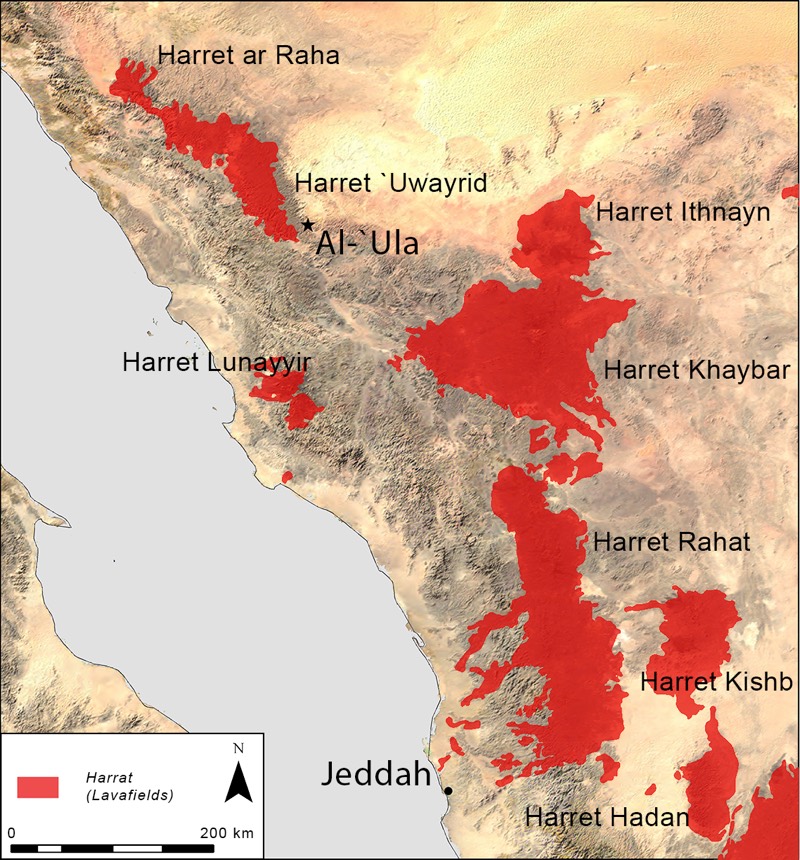
Many of the stone structures the team photographed are found on lava fields known as "harrat." This map shows those harrat in the Al-Ula region of Saudi Arabia.
Wadi an Najd

This photo shows Wadi an Najd. a mountainous area located 43 miles (70 km) northwest of the Al-Ula Valley. The geological beauty of this region cannot be put into words.
Bullseye

The archaeological sites the team photographed are both spectacular and mysterious. At this site, a low wall running for 0.85 miles (1.36 kilometers) connects a stone structure that archaeologists call a "bullseye" (which may hold a tomb) with another stone structure that archaeologists call a "gate." This photo show a bullseye with a unique design.
Field gates

The photo shows the gate mentioned in the last photo with the low wall starting from a cairn (a rock pile that may hold a tomb) at one of the corners of the gate. Nearly 400 gates have been identified in Saudi Arabia, but their purpose is unknown. From above, these structures resemble old-fashioned field gates — hence their name.
Sprawling gate
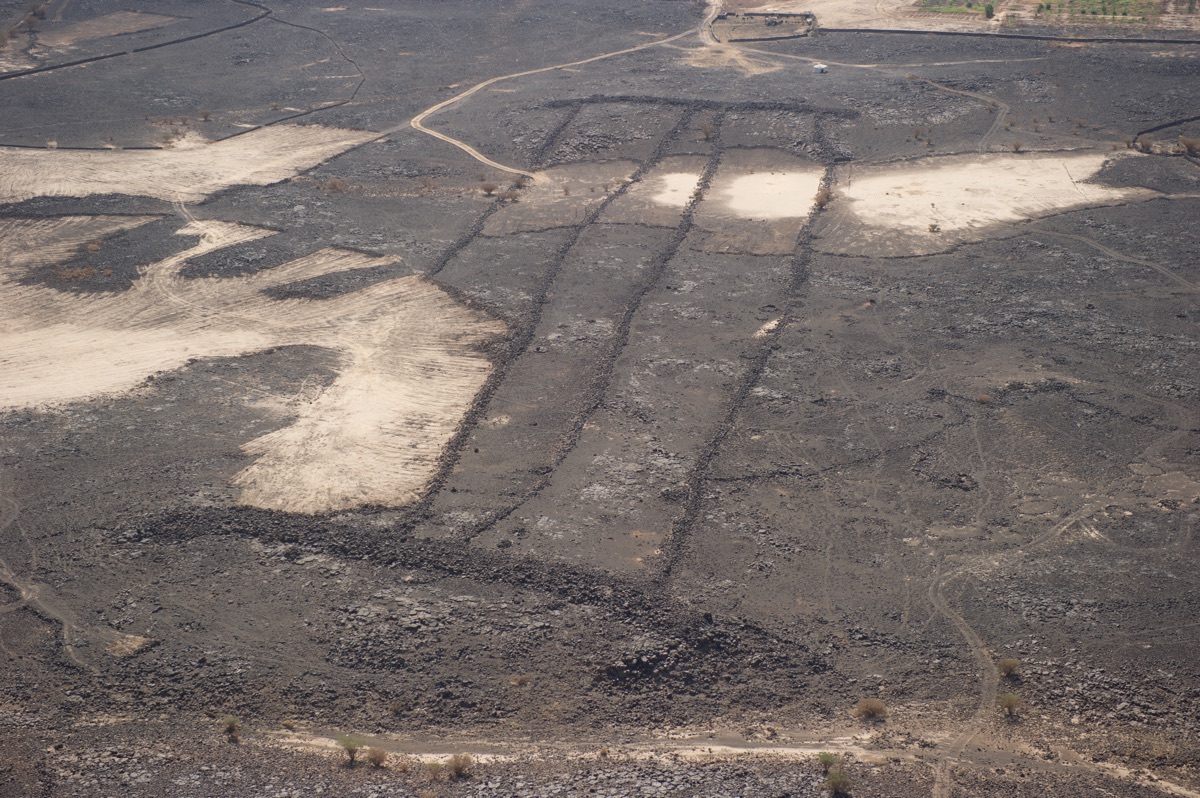
The gate shown in this photograph is the fifth largest of the gates documented so far. It is 1,224 by 262 feet (373 by 80 meters) in size. The gate has four bars, making it relatively rare. It has been partly bulldozed and is in danger of being destroyed. So far, no gates have been discovered outside of Saudi Arabia. [Read more about aerial archaeology in Saudi Arabia]
Triangle on Google Earth

In this Google Earth satellite image, a triangle can be seen pointing to a bullseye, with a row of cairns connecting the triangle to the bullseye. The triangle, bullseye and cairns are all inside a gate. The site can be identified on Google Earth, but it appears fuzzy.
Get the world’s most fascinating discoveries delivered straight to your inbox.
Triangle structures
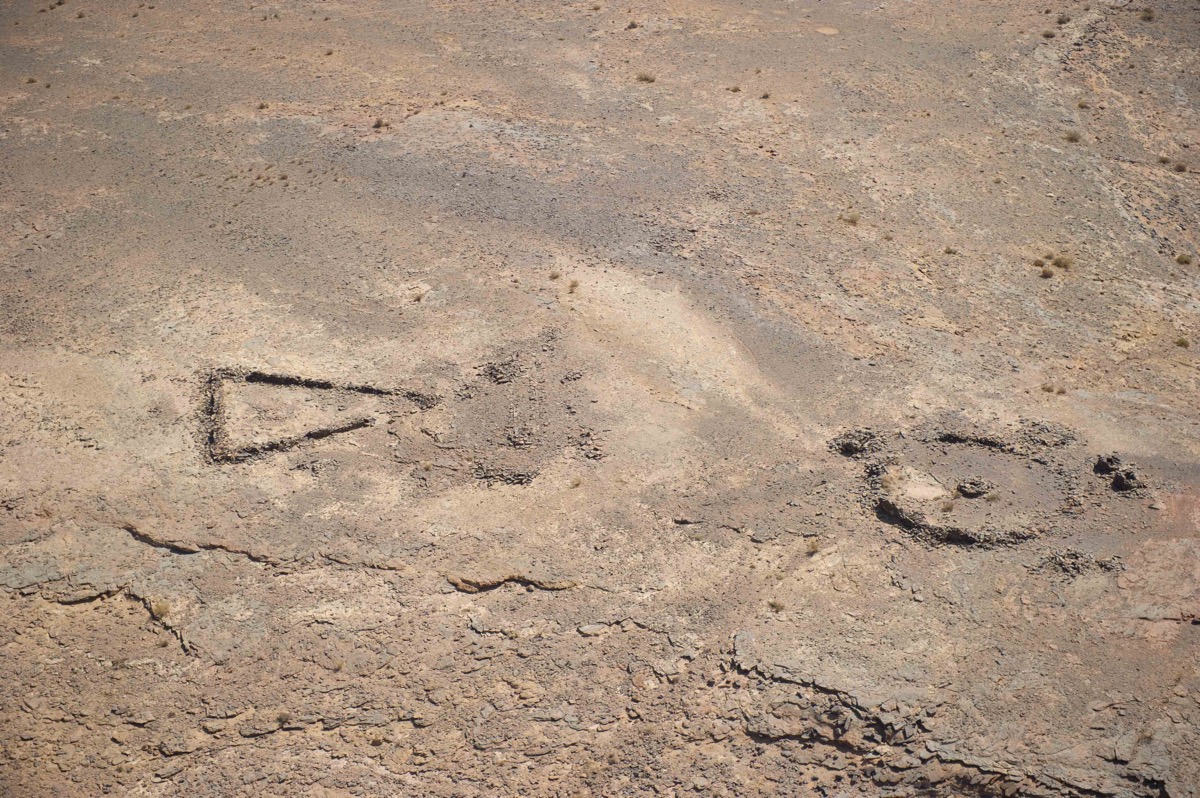
A triangle-shaped stone structure is seen pointing toward a bullseye. To date, about 260 triangles have been identified in Saudi Arabia. Triangles can usually be seen pointing toward a bullseye. Sometimes, a row of cairns (rock piles) connects the triangle to the bullseye. Triangles range from 49 to 98 feet (15 to 30 meters) in size.
Triangle in aerial image
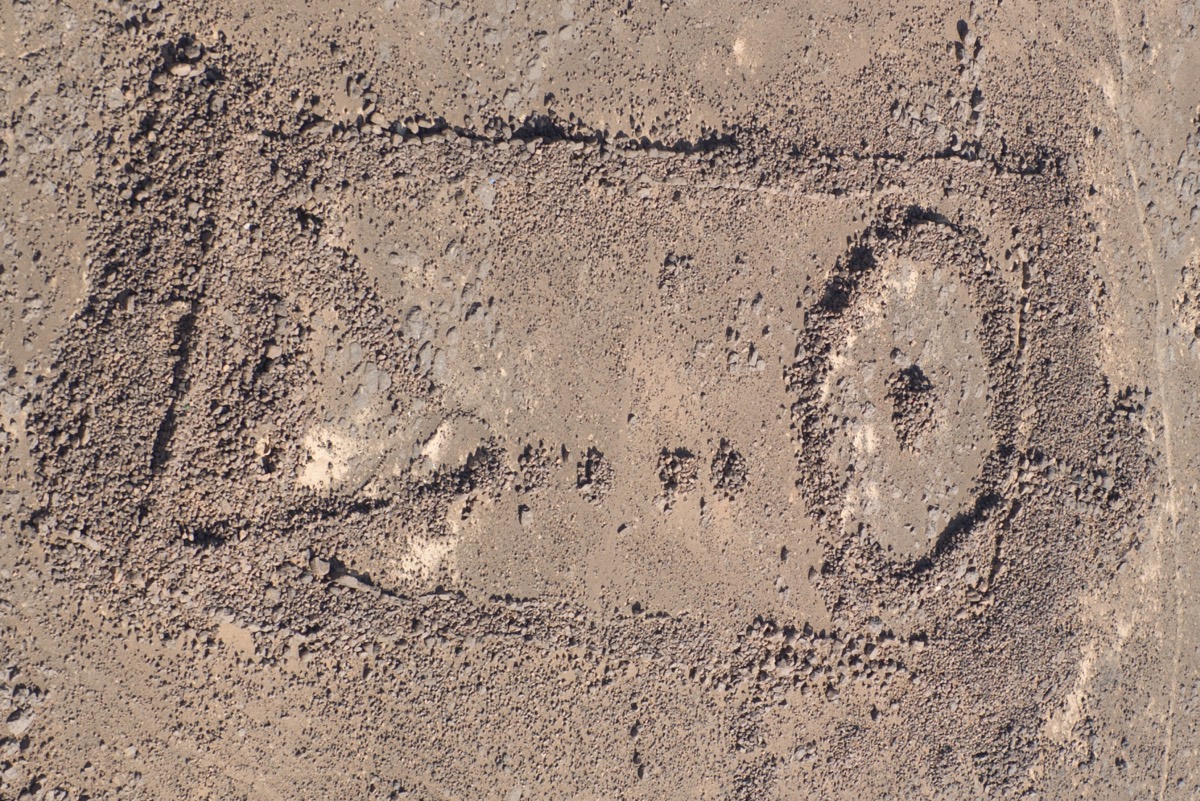
The aerial photo reveals that the bars are not slender walls but a double line of stones with an in-fill of smaller stones. The entire triangle can be made out in much greater detail, and a wall can be seen projecting out from the far side of the gate.
Gates in lava
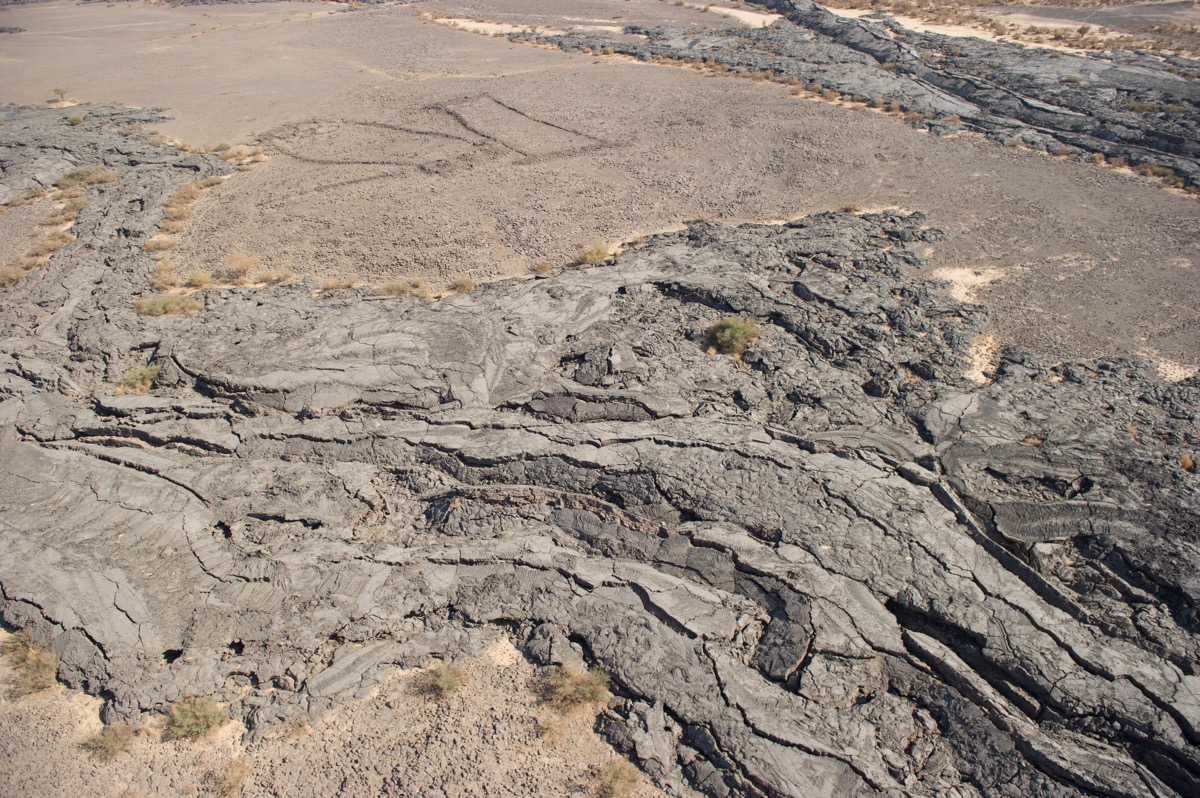
Two gates can be seen beside a lava flow in the Harret Khaybar. The fact that the gates are sometimes found partially or entirely buried by lava flows suggests that the gates were created before some of the lava flows occurred. [Read more about aerial archaeology in Saudi Arabia]
Bullseye on top of gate

In this photo, a bullseye can be seen on top of a gate that is surrounded by a lava flow. Bullseyes and other stone structure can often be seen on top of gates, suggesting that the gates were built first.

Owen Jarus is a regular contributor to Live Science who writes about archaeology and humans' past. He has also written for The Independent (UK), The Canadian Press (CP) and The Associated Press (AP), among others. Owen has a bachelor of arts degree from the University of Toronto and a journalism degree from Ryerson University.
